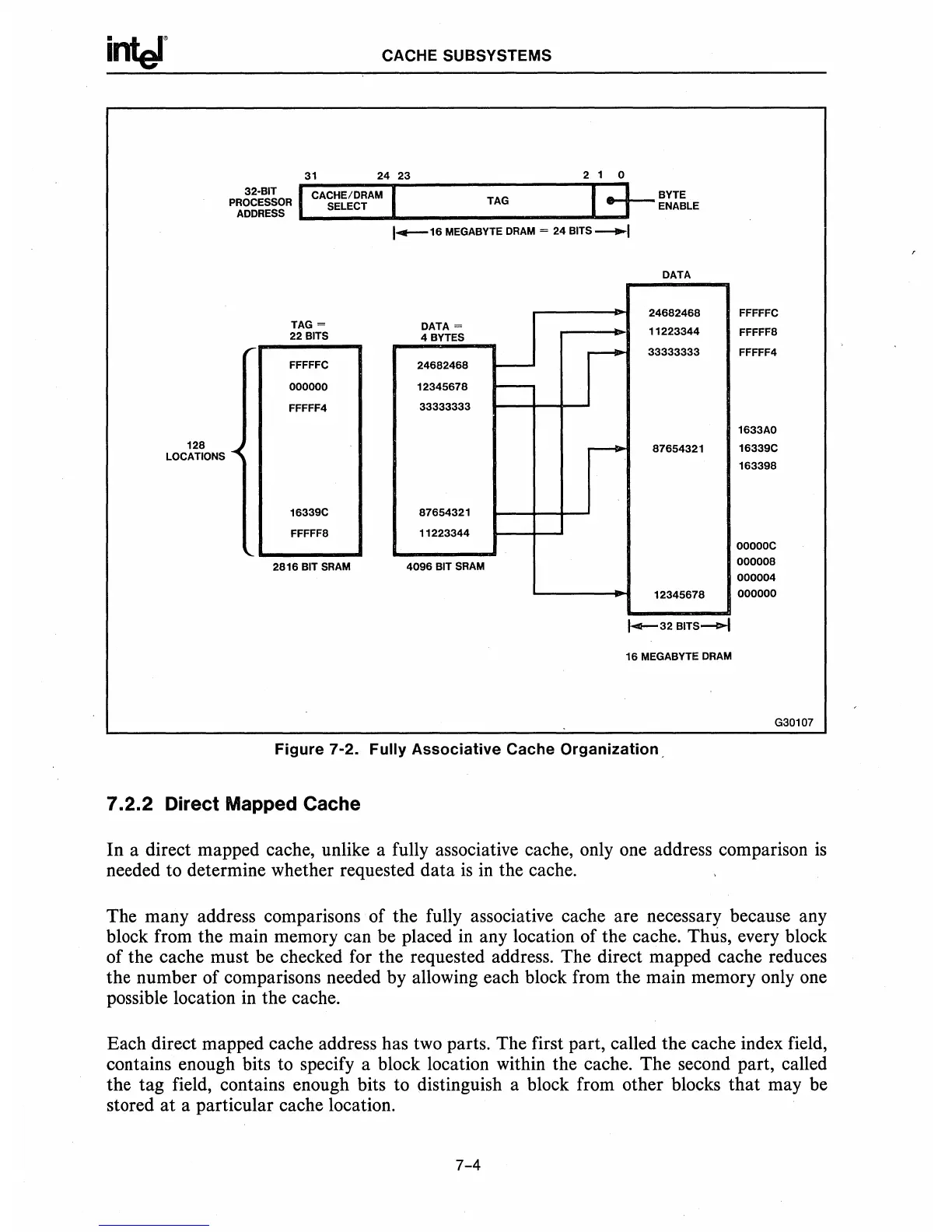CACHE SUBSYSTEMS
31
24 23
2 1 0
32·BIT I CACHE/DRAM
P~~~~~~~R
SELECT
TAG I
3-
~~!~LE
1_16
MEGABYTE
DRAM
~
24
BITS
___
I
TAG
~
22 BITS
FFFFFC
000000
FFFFF4
16339C
FFFFF8
'-oo_
___
..
2816
BIT
SRAM
DATA
~
4 BYTES
24682468
12345678
33333333
87654321
11223344
4096
BIT
SRAM
DATA
24682468
11223344
r
33333333
f--
-
87654321
12345678
1-32BITS-i
16 MEGABYTE
DRAM
Figure
7-2.
Fully
Associative
Cache
Organization.
7.2.2 Direct Mapped Cache
FFFFFC
FFFFF8
FFFFF4
1633AO
16339C
163398
OOOOOC
000008
000004
000000
G30107
In a direct mapped cache, unlike a fully associative cache, only one address comparison
is
needed to determine whether requested data
is
in
the cache.
The many address comparisons of the fully associative cache are necessary because any
block from the main memory can be placed in any location of the cache. Thus, every block
of the cache must be checked for the requested address. The direct mapped cache reduces
the number of comparisons needed by allowing each block from the main memory only one
possible location
in
the cache.
Each direct mapped cache address has two parts. The first part, called the cache index field,
contains enough bits to specify a block location within the cache. The second part, called
the tag field, contains enough bits to distinguish a block from other blocks that may be
stored
at
a particular cache location.
7-4

